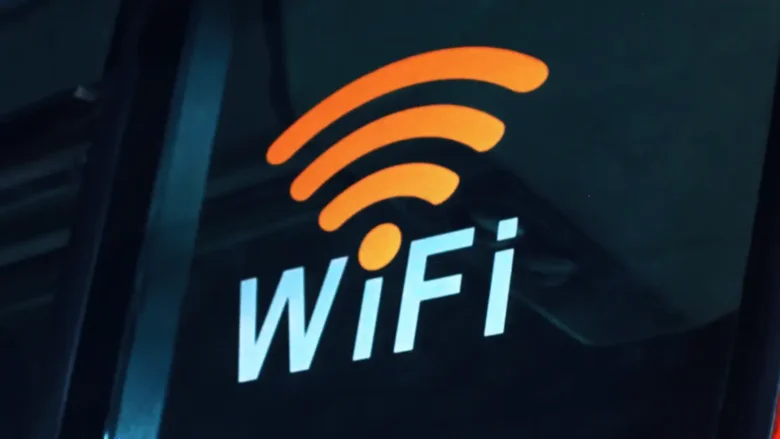One of the most frustrating aspects of daily digital life is slow Wi-Fi. In 2025, the importance of fast, reliable Wi-Fi cannot be underestimated, as more and more devices—from laptops and smartphones to smart appliances and streaming services—rely on a stable internet connection. Whether you’re working remotely, streaming your favorite shows, or playing online games, slow Wi-Fi can disrupt your experience and reduce your productivity. While many people think a new internet plan is the only option, there are actually many practical and affordable ways to fix slow Wi-Fi. This article highlights simple solutions that anyone can try and guides you through the latest tips for improving your connection speed in 2025. By the end of this article, you’ll know exactly why your Wi-Fi is slow and how to easily fix it.
Identifying the Causes of Slow Wi-Fi in 2025:
Before trying solutions, it’s crucial to understand the causes of slow Wi-Fi. With the rollout of 5G, Wi-Fi 6E, and the upcoming Wi-Fi 7, the internet landscape will change dramatically by 2025. Not everyone has made the switch, however, and many households still struggle with issues like outdated routers, interference, and poorly placed devices. With dozens of devices connected simultaneously in the home, bandwidth congestion is another problem. Even basic factors like walls, electromagnetic interference, and outdated firmware can cause serious internet speed issues. The first step to successfully resolving slow Wi-Fi speeds is understanding these potential problems.
Smart Resetting Routers and Modems:
Resetting routers and modems is one of the simplest solutions, but smart reset features have improved in 2025. Routers now come with self-diagnosis tools and apps that allow you to restart from your phone without having to manually unplug the router. Rebooting can fix unexpected slowdowns, resolve temporary issues, and restore your connection to your internet provider. Setting an automatic restart at least once a week is a wise move to maintain network functionality.
Place Your Router Where Speed Is Best:
In 2025, placement remains more important than ever. Even with the most advanced signal technology, physical obstacles like large furniture and thick walls can weaken Wi-Fi transmission. Ideally, place your router in a central location, high up, and free of obstructions. Keeping it away from Bluetooth devices, cordless phones, and microwaves can reduce interference. For larger homes, mesh Wi-Fi systems are now more cost-effective, ensuring no dead zones and a reliable signal everywhere.
Changing Router and Firmware Configurations:
Firmware updates are often overlooked, but in 2025, they will be essential for fixing bugs, improving speed, and enhancing security. While most modern routers support automatic updates, manual verification is still required to ensure you’re always using the latest version. Adjusting router settings, such as channel selection, frequency band (2.4 GHz, 5 GHz, and 6 GHz), and enabling Quality of Service (QoS), can also significantly improve internet speed. By prioritizing video chats or streaming media, you prevent less important tasks from hogging bandwidth.
Choosing the Right Frequency Band:
Current routers offer different frequency bands: 2.4 GHz for long-range connections, 5 GHz for faster speeds, and the latest 6 GHz for blazing-fast, interference-free connections. Choosing the right frequency band for your needs can instantly put an end to slow Wi-Fi speeds. For example, IoT devices like smart lights should stay on the 2.4 GHz band, while streaming 4K movies is best done on the 5 GHz or 6 GHz band. Understanding how to control devices on different frequency bands ensures your network runs smoothly and avoids congestion.
Managing Bandwidth and Connected Devices:
By 2025, the average home will have dozens of connected devices, including security cameras, voice assistants, and smart TVs. Each device consumes bandwidth, and if left unchecked, Wi-Fi speeds for essential tasks will be slow. Modern routers have built-in device management panels that keep you informed about which devices are connected and how much bandwidth they’re using. By setting bandwidth limits for non-essential devices or disconnecting unused devices, you can free up more bandwidth for essential tasks like gaming or remote working.
Use a mesh system or Wi-Fi extender:
If you’re still experiencing signal loss in your home, a mesh system or Wi-Fi extender is a viable option. While mesh Wi-Fi is best suited for larger homes or multi-story buildings, extenders work better in smaller spaces. By 2025, smarter mesh networks will automatically route devices to the most efficient node. Furthermore, these systems will respond to your usage habits, ensuring uninterrupted coverage without frequent adjustments.
Check if your internet provider offers an upgrade.
Occasionally, the problem lies with your internet plan, not your router. Despite a significant increase in internet usage, many people are still using outdated plans. Contact your internet provider to ensure you have the right speed plan for your family’s needs. Gigabit internet will become more common in many areas by 2025, so if you’re still experiencing slow speeds after optimizing your home setup, an upgrade is worthwhile.
Prevent Unauthorized Access to Your Network:
Neighbors or strangers can occasionally eavesdrop on your network traffic, so slow Wi-Fi isn’t always a technical issue. Even in 2025, network security remains crucial. Always encrypt your Wi-Fi with a strong WPA3 password and regularly scan the network for unknown devices. Many router software programs now alert you when new devices connect and can block unwanted users. You can ensure your family gets the full speed you paid for by protecting your bandwidth.
When to Replace Your Router:
Even with various optimizations, an outdated router can hinder your network’s growth. Due to rapid technological change, routers older than five years usually don’t support newer standards like Wi-Fi 6E or Wi-Fi 7. Investing in a modern router provides greater stability, coverage, and speed. Upgrading your router in 2025 is often the best way to future-proof your home network, even though it may seem like an extra expense.
Conclusion:
In 2025, drastic measures won’t always be necessary to fix poor Wi-Fi. By combining smart solutions like controlling your devices, updating firmware, optimizing your network, and securing it, you can get a faster and more reliable internet connection without breaking the bank. Often, small changes can yield big benefits and completely transform your online experience. To meet growing demand, you may need to upgrade your internet plan or router if problems persist. By proactively implementing these simple solutions, you’ll ensure your Wi-Fi remains stable, secure, and ready for your connected lifestyle, now and in the future.
FAQs:
1. What caused my Wi-Fi to suddenly slow down in 2025?
Broadband congestion, outdated firmware, device interference, or too many connected devices can all cause a slow Wi-Fi connection. Temporary issues with your internet provider could be the cause.
2. Is upgrading to Wi-Fi 6E or Wi-Fi 7 in 2025 worth it?
Upgrading can provide better coverage, higher speeds, and improved performance, especially if you frequently use data and have multiple devices.
3. How do I know if my router is outdated?
If your router is older than five years, doesn’t support Wi-Fi 6/6E, or frequently disconnects, it’s probably outdated and needs to be replaced.
4. Will using a VPN slow down my Wi-Fi?
Because VPNs reroute your traffic, they can actually slow down speeds. However, premium VPN services in 2025 will have optimized servers that can minimize this effect.
5. Do smart home devices cause Wi-Fi slowdown?
Yes, performance can be affected if too many devices are connected to the same frequency band. This can be solved by managing bandwidth and using multiple frequency bands.



